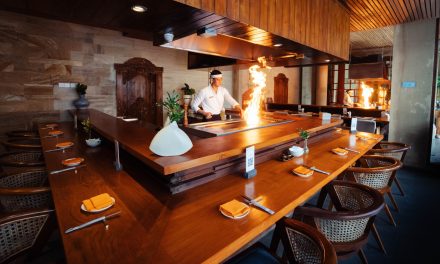When you think of Bali, what comes to mind? Picturesque beaches? Lush rice terraces? While these are certainly part of its charm, there’s a deeper layer worth exploring—Bali’s traditional culture. As someone who has wandered through the vibrant streets of Ubud and basked in the peaceful ambiance of local ceremonies, I can assure you that Bali’s cultural richness is as captivating as its landscapes. Let me take you on a journey through some unique aspects of Bali’s traditional culture that truly make it special.
The Balinese Way of Life: Tri Hita Karana
One of the first things you’ll notice when you step into Bali is the pervasive philosophy of Tri Hita Karana, which translates to three causes of well-being. This belief system fosters harmony among three crucial elements: God, humans, and nature.
I remember attending a traditional Balinese ceremony held in a local village. The atmosphere was charged with excitement, filled with colorful offerings made from beautifully arranged flowers, fruits, and rice. Villagers gathered not just to celebrate but to maintain harmony within their community and with nature. It struck me as a powerful reminder of the interconnectedness of life in Bali.
Practical advice: When you visit, participate in a local ceremony. Not only will it provide you insight into this philosophy, but it’s also a great opportunity to connect with the locals and to understand their perspectives on life.
Offerings: An Everyday Ritual
Walk around any Balinese street, and you’ll undoubtedly stumble upon small offerings known as canang sari. Every day, Balinese women craft these delicate offerings with meticulous care, making them from flowers, fruits, rice, and leaves.
During my stay, I was fortunate enough to join a Balinese woman, Nyoman, who taught me how to create these offerings. She patiently guided me step by step, explaining that these beautiful little gifts are made to appease the spirits and thank them for their blessings. It transformed what I thought was merely a decorative item into a profound act of gratitude.
Relatable scenario: Imagine waking up to the gentle sound of gamelan music wafting through your window, only to find that you’ve been invited by a local family to join them as they prepare their offerings for the temple. It’s an invitation to not just witness, but to be part of a daily ritual that’s far more than a tradition.
Balinese Dance: A Language of Expression
Have you ever experienced a dance that leaves you speechless? In Bali, traditional dance is not just entertainment; it’s a form of storytelling and spiritual expression. Dance forms such as the Legong and Kecak involve intricate movements and captivating storytelling, often depicting ancient Balinese legends.
I first encountered Balinese dance during a sunset performance in Ubud. Sitting on bamboo mats under the stars, I watched the dancers transform into characters, their expressions telling stories of love, battle, and devotion. The rhythmic chanting of the Kecak chorus sent chills down my spine, as the dancers moved in sync with the beat of the drums.
Unique insight: Try to attend a performance in a local setting rather than a tourist-centric venue. This difference can dramatically enhance your experience, allowing you to witness the dances against the backdrop of their cultural significance.
Balinese Cuisine: A Taste of Tradition
Let’s not forget Bali’s unique culinary landscape. Food is central to Balinese culture, and dishes are often infused with the same spiritual beliefs that govern daily life. Staples like nasi campur, and babi guling (suckling pig) are more than just meals; they’re traditional offerings during ceremonies.
I’ll never forget my first experience trying the Babi Guling at a local warung (eatery). The crispy skin and tender meat were unlike anything I had tasted before. Sharing the meal with a Balinese family, I learned how food is often a communal experience, embodying their value of togetherness.
Practical advice: Don’t miss out on taking a Balinese cooking class. It’s not only a fun way to learn about local ingredients but also a chance to immerse yourself in their culinary traditions.
Ceremony and Celebration: A Colorful Calendar Year
In Bali, there’s a celebration for everything! The Balinese calendar is filled with ceremonies that honor the gods, ancestors, and nature, making every month a festive celebration. From Nyepi (Day of Silence), when the island comes to a standstill, to Galungan, signifying the victory of good over evil, there’s always something vibrant happening.
Participating in Nyepi was a surreal experience. The day before, I joined the locals in making large, elaborate ogoh-ogoh (demonic statues) that were paraded around the village before being burned to drive away evil spirits. The silence of the actual Nyepi day was striking—a complete contrast to the usual hustle and bustle. It felt as if the island took a deep breath, allowing for reflection and renewal.
Unique aspect: Be mindful of the ceremony dates. Timing your visit to coincide with a local celebration can provide you with an unforgettable experience that you won’t find in your travel guide.
Final Thoughts: Embracing the Culture
Embracing Balinese culture requires a heart open to new experiences. It’s an invitation to participate, to connect with the locals, and to view life through their lens. The unique aspects of Bali’s traditional culture are not just about observation; they call for interaction and understanding. Your journey will become richer when you appreciate these cultural nuances, realizing that every tradition and ritual you encounter tells a story worth knowing.So, as you plan your trip to this enchanting island, remember to explore beyond the picturesque sunsets and sandy beaches. Dive deep into the unique aspects of Bali traditional culture, and I promise you’ll leave with memories that will last a lifetime.






